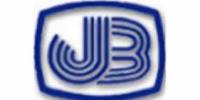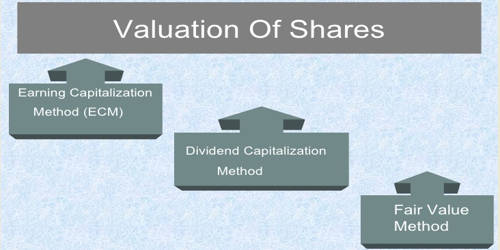INTRODUCTION
The development of commercial banking institutions has been taken place in different countries according to their economic, political, social and geographical conditions. Primary function of commercial bank is a) accepting of deposits & b) lending of money. Deposits are an important source of a bank’s funds. A major portion of the deposits received by a bank is lent by it. Commercial Banks follows fixed interest rate in its functioning.
Conventional banks engage in the following types of financing arrangements:
ADVANCES
Granting advances is the primary function of a bank. A major portion of is funds is used for this purpose and this is also the major sources of bank’s income. However, lending money is not without risk and therefore, a banker must take proper precaution in this process.
Forms of Advance:
a) Cash credits:
A Cash Credit is an arrangement by which a banker allows his customer to borrow money upto a certain limit. Cash credit is a popular mode of borrowing by traders, industrialists and agriculturalists. It is a separate account by itself and does not require having any other account with the bank. It resembles the use of overdrafts on a checking account. It is an arrangement whereby the borrower may withdraw funds as needed for day-to-day operations without the delay associated with making a loan. The borrower may not exceed a predetermined limit and must deposit cash back into the account as funds become available from daily operations. Interest is charged on the daily balance in the account.
Cash Credit arrangements are usually made against the security of commodities hypothecated or pledged with the bank.
Hypothecation- In case of hypothecation, possession of goods is not given to the bank. The goods remain at the disposal and in the go downs of the borrower. The bank is given access to goods whenever it so desires. The borrower furnishes periodical return of stock with him to the bank. Such an advance is granted by the bank to a person in whose integrity it has full confidence.
Pledge- In cases of pledge, the goods are placed in custody of the bank with its name on the go down where they are stored. The borrower has no right to deal with them.
Advantages of Cash Credit:
Flexibility- in case of a cash credit system, the customer need not borrow at once whole of the amount he is likely to require but draw such amounts as and when required. He can put back any surplus amount, which he may find with him for the time being. Interest has to be paid by the customer on the amount actually drawn at any time and not on the full amount of the credit allowed.
Convenience- banks have to maintain only one account for all transactions on the customer and hence repetitive documentation cab be avoided. Thus, the system is quite convenient to operate.
b) Overdrafts:
When a current account holder is permitted by the banker to draw more than what stands to his credit, such an advance is called an overdraft. The banker may take some collateral security or may grant such advance on the personal security of the borrower. The customer is permitted to withdraw the amount as and when he needs it and to repay it by means of deposit in his account as and when it is feasible for him.
Interest is charged on the exact amount overdrawn by the customer and for the period of its actual utilization.
Generally, a bank on the basis of a written application and a promissory note signed by the customer gives on overdraft facility (normally for 30 days).
LOANS
Under loan system, credit is given for a define purpose and for a predetermined period. The most obvious form of financing by a conventional bank is the loan arrangement. Normally, these loans are repayable in installments. Funds are required for single non-repetitive transaction and are withdrawn only once. If the borrower needs funds again or wants renewal of an existing loan, a fresh request is made to the bank. Thus a borrower is required to negotiate every time he is taking a new loan or renewing and existing loan.
Advantages of loan system:
Financial discipline on the borrower- as the time of repayment of the loan or its installments is fixed in advance, this system ensures a greater degree of self-discipline on the borrower.
Periodic review of loan account- whenever any loan is granted or its renewal is sanctioned; the banker gets an opportunity of automatically reviewing the loan account.
Profitability- the system is comparatively simple. Interest accrues to the bank on the entire amount lent to a customer.
TYPES OF LOANS
a) Short Term Loans:
Short term loans are granted to meet the working capital need of the borrowers. These loans are granted against the security of tangible assets mainly the movable assets like goods and commodities, shares, debentures etc.
Bridgeloans-Bridge loans are essentially short term loans which are granted to industrial undertakings to meet their urgent and essential needs during the period when formalities for availing of the term loans sanctioned by financial institutions are being fulfilled or necessary steps are being taken to raise the funds from the capital market. These loans are granted by banks or by financial institutions themselves and are automatically repaid out of amount of the term loan or the funds raised in the capital market.
b) Term loans:
Medium and long terms are usually called Term Loans. These loans are granted for more than a year and are meant for purchase of capital assets for the establishment of new units and for expansion or diversification of and existing unit. Such loans constitute a part of the ‘project finance’ which industrial enterprises are required to raise from different sources. These loans usually secured by the tangible assets like land, buildings, plant and machinery etc.
This type of loan is advanced to industries and agriculture for fixed capital requirements. These loans are also granted to traders for purchase of fixed assets, to transport operators for purchase of vehicles, and to self-employed persons for purchase of equipment. These loans are usually extended for a term of 3 to 7 years and in special cases up to 10 years and are generally repayable by installments. Since it will take a year or two to derive the full benefits of expansion or renovation, installments for repayment may commence after one or two years of the disbursement of the loan. Interest is charged on annual basis.
c) Consumption loans:
Though normally banks provide loans for productive purposes only but as an exception loans are also granted on a limited scale to meet the medical needs or the educational expenses or expenses relating t o marriage and other social ceremonies etc. of the needy persons, such loans are called consumption loans.
d) Hire-purchase advances:
Under this arrangement, conventional banks grant advances to its clients engaged in hire-purchase business relating to transports, refrigerators, and televisions, for example. This type of financing is usually repaid with installments including principal and interest. The bank generally requires immovable property as collateral against this type of financing.
e) Bills purchased/discounted:
Export-Import businesses are performed through opening of L/Cs with Bank. The client, while opening the L/C, comes to an agreement with the bank that the latter will repay the bill received on the farmer’s behalf on a certain date onward in exchange for a specific rate of interest determined at the time of agreement. If the bill happens to reach well ahead of the date mentioned, the bank may purchase the bill, if requested, with a discount. In this case, the bank makes the return twice: first, by charging interest and then by discounting the bill.
In conventional banking loans and advances are generally extend as a Project Loan, Working Capital Loan, Trade Finance (Domestic & International), House Building Finance (Commercial & Residential), Contractors Financing, Receivable Financing, Cash Credit, Over Draft, Packing Credit, Trust Receipt, Guarantee, Letters Of Credit, Personal loan, Loan against TR (LTR), Payment against Documents (PAD), Loan against Import & merchandise.
FINDINGS AND ANALYSIS
1 SIBL profit earning capacity is not satisfactory.
2 Its marketing strategy is not well designed.
3 Existing Human Resources are not sufficient for SIBL. They have to recruit more skilled employees.
4 Number of Branches are not satisfactory, SIBL have to give more emphasize on increasing number of Branches.
5 Recruitment and selection process is a time consuming and lengthy process and irregular.
6 The whole activities of SIBL is not computerized, still there exist manual record keeping system.
7 Sometimes Islami Shariah are not properly followed.
8 Job security is lower in SIBL.
9 Insufficient training program for the employees.
10 Slower in modernization comparing with its competitors.
11 The working environment in any branch is not congenial & appropriate. The working desk provides sound pollution. It looks like a hall room.
12 The modern technology is not used in the recruitment and selection process. The backdated methods are using for selection till today.
13 Salary structure of SIBL is satisfactory comparing with other Islamic Banks, the pension policy and the payment of pension to the employees are very fair and transparent.
14 The transfer and promotion process is fair but the promotion is not faster.
15 Loan facilities are very attractive to the employees of SIBL.
16 Most of the policies are backdated. Only the authority amends the policy but preserve the old policy.
17 There is no policy to build up harmonious relationship among the employees. The employees cannot protest the injustice of the authority because the pure trade union is absent there.
18 The record keeping system is also backdated, not followed computerized system properly
19 Security system of many branches is not sufficient.
RECOMMENDATION
- SIBL should concentrate in increasing its profit earning capacity.
- It should develop effective marketing strategy to attract new customers.
- Raising the capital, statutory reserve and increase the investment.
- The number of branches should be increased
- Expand and diversify customer base.
- Upgrade Online Banking.
- Recruit more skilled employees regularly.
- Bank should introduce independent ‘Marketing Department’
- Personal relationship should be build with the customers.
- Customers are the heart of the organization. They should provide more space in the office and if possible they should have some entertainment facility.
- The employee of the branch should be trained continuously.
- Few branches are not under online banking system, so all the branches should confirm on line banking system.
- More meetings, seminars, symposiums and get-together should be organized by the Branches to develop the awareness among the clients of the Bank about Islamic Banking and its advantages.
- Ensure stable dividend.
- Ensure high level customer service.
- The Bank should follow Islami Sharia strictly in every of its operation.
- Bank should introduce ATM system.
- Should introduce one-stop service centre.
- Bank should keep their annual report, brochure, bulletin etc. available to provide their customer.
- Bank should introduce consumer credit scheme.
CONCLUSIONS
Today the banking service is very competitive. From the practical materialization of customer dealing procedure during the whole period of my practical orientation in Social Islami Bank limited I have reached a firm and concrete conclusion in a very confident way. I believe that my realization will be in harmony with most of the banking thinkers. It is quite evident that to build up an effective and efficient banking system to the highest desire level, computerized transaction is must.
Social Islami Bank Ltd. is a new generation Bank. It is committed to provide high quality financial services/products to contribute to the growth of G.D.P of the country through stimulating trade and commerce, accelerating the pace of industrialization, boosting up export, creating employment opportunity for the educated youth, poverty alleviation, raising standard of living of limited income group and overall sustainable socio-economic development of the country. The is not so far when it will be in a position to overcome the existing constraints and it may be expected that by establishing a network over the country and by increasing resources this bank will be able to play a considerable role in the portfolio of development of financing.
Success in the banking business largely depends on effective lending. Less the amount of loan losses, the more the income will be from credit operations. The more the income from credit operations the more will be the profit of the Social Islami Bank Ltd. and here lays the success of credit financing.
It can be argued that though the results achieved so far are not satisfactory, credit financing is a modern scientific technique for enhancing Social Islami Bank’s strength and there lies the opportunities to make it more effective in the future for our own benefit.
From the learning and experience point of view I can say that I really enjoyed my internship at Social IslamiBank Ltd. from the very first day. I am confident that this 03 (Three) months internship program at Social Islami Bank Ltd. will definitely help me to realize my further carrier in the job market.
BIBLIOGRAPHY
1. Annual Report of Social Islami Bank Limited (2010)
2. Several Booklets from Social Islami Bank Ltd.
3. Several Newsletter s from Social Islami Bank Ltd.
4. Social \ Islami Bank web site, www.al-arafahbank.com
5. Credit Operational Manual of Social Islami Bank Limited.
6. ‘SHARIAH MANUEL’ published by Social Islami Bank Limited.
7. www.siblbd.com, www.islamibankbd.com
8. www.bangladeshbank.org
9. www.wikipedia.org

















